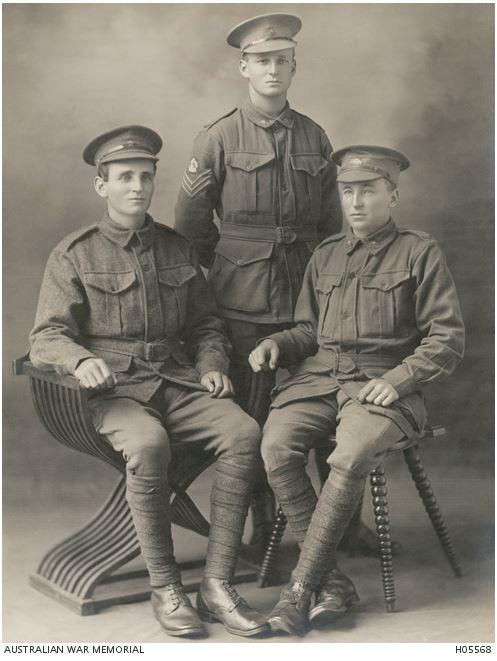Remembering the Seabrook brothers

It’s a striking image of a treasured family photograph, a poignant reminder of William and Fanny Seabrook’s overwhelming grief after their three sons were killed in the battle for the Menin Road 100 years ago.
On 20 September 1917, the Seabrook brothers – George, Theo and William – were with the Australian 17th Battalion when it attacked the German positions in front of the village of Westhoek. Advancing more than a kilometre, the battalion’s attack was considered a success. But the day would prove devastating for the Seabrook family of Sydney.
With a final handshake for his batman, Lieutenant William “Keith” Seabrook led the men of his platoon into the front line positions. While walking in single file along the duckboards they were hit by a phosphorous bomb that killed or wounded the full section of the platoon he was leading.
As their younger brother was being stretchered from the battlefield, Privates George and Theo Seabrook were with the battalion as it launched its attack. Both were hit by a single artillery shell and killed instantly. George was 25 years old, Theo a year younger.
William died of his wounds the following day. In the breast pocket of his tunic was a photograph of his mother, Fanny. The fragment that killed him had gone through the photo. He was 21 years old.
For the Seabrook brothers, it was their first, last and only battle. George and Theo’s bodies were never found. Their names are on the Menin Gate Memorial to the missing in Ieper (then known as Ypres) along with more than 6,000 other Australian dead and missing in Flanders.
Fanny Seabrook penned William’s epitaph for the grave she would never see in the Lijssenthoek Military Cemetery: “A willing sacrifice for the world’s peace.”
Mrs Seabrook desperately wrote to the military authorities on the 27th of November 1917. “It is all very confusing to our mind,” she wrote. “And if you could explain to me we would be much obliged and thankful. The blow of losing our three sons in one battle is terrible. We are heartbroken.”
Later, she wrote a letter to her member of parliament. “Having given our three boys as a sacrifice to the country … I will never recover,” she wrote. “And now my husband is a complete wreck … I have put my property up for sale as it seems there is no other way. Mr Seabrook has been raving about our three boys and has delusions of all kinds. Please pardon me for telling you all these things, but I have no one to confide in.”
In 1928, Fanny Seabrook was among the one million Australians who queued to see William Longstaff’s painting, Menin Gate at Midnight, which is now displayed at the Australian War Memorial. It was the closest she would ever get to her dead sons.